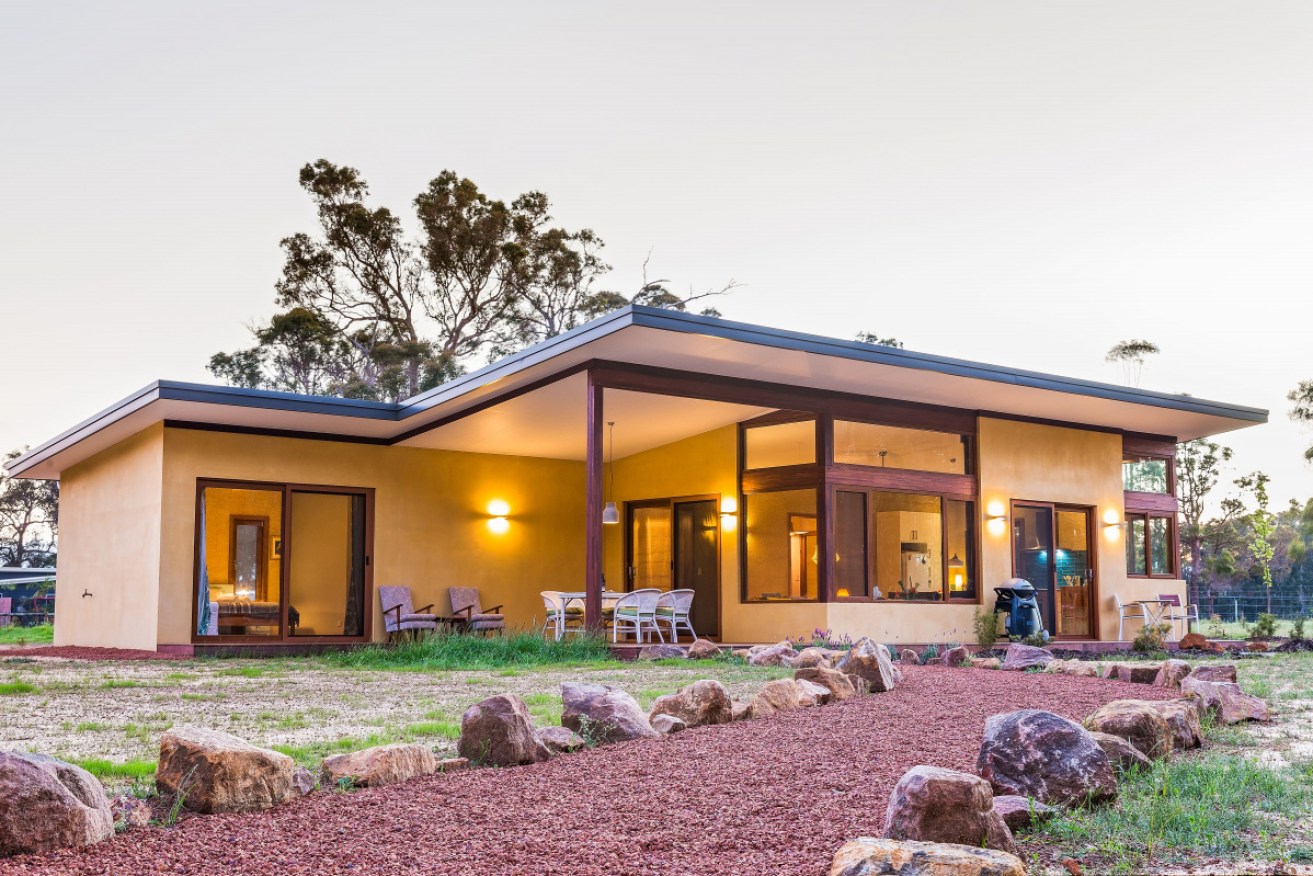A look inside six of Australia’s most sustainable houses


This two-bedroom hemp house cost $420,000 to build and saves its owners thousands on utility bills. Photo: Ange Wall Photography
After a rough few decades, cannabis has really turned its life around.
Doctors are prescribing oils to patients, athletes are chugging down hemp protein shakes, and governments around the world are slowly legalising marijuana.
Head over to Witchcliffe in Western Australia this Sunday, and you’ll see that architects are building entire homes with the stuff, too.
Built from Hempcrete – a building material comprising hemp, lime and water – Sativa Sanctuary Hemp house is open for public viewing this weekend, as part of Australia’s annual Sustainable House Day (SHD).
The property, which is one of 236 sustainable homes across the country that SHD attendees can visit, was designed by Ecotect Architects and built by Hemp Homes Australia.
It’s a passive house – meaning it maintains a comfortable, year-round temperature without air-conditioning. And, among other things, it uses recycled rainwater in its shower and washing machine.
According to Renew, the sustainability advocacy group behind SHD, the home is far from alone in its use of natural building materials, with an increasing number of builders turning to rammed earth and straw-bale in a bid to reduce their carbon footprint.
The organisation’s CEO Donna Luckman told The New Daily the use of such materials, coupled with thoughtful design, meant more houses were now producing more energy than they consumed.
“And these are beautiful, gorgeous homes that I would like to live in,” Ms Luckman said with a chuckle.
Here are six of the most impressive.
1. Sativa Sanctuary hemp house, Witchcliffe WA

The two-bedroom house cost $420,000 to build. Photo: Ange Wall Photography
Sativa Sanctuary gets special mention for its use of Hempcrete, which prevents the room temperature from falling below 17 degrees Celsius in winter, without the need for heating.
It’s also an example of a sustainable home that looks great, too.
Inside, earthy hues team with natural wooden floorboards to create a cosy, welcoming aesthetic. An open-plan living area is bathed in sunlight pouring in from generous double-glazed windows. And a garden mirroring the nearby bush helps the property blend in with its green surroundings.
2. Waramanga Rammed Earth, Waramanga ACT

This home saves its owners $5000 a year in utility bills. Photo: Supplied/SHD
Built around a spine of rammed earth, this three-bedroom house offers a stable, year-round temperature of 20 to 22 degrees Celsius and has a 8.8-star energy rating.
The all-electric passive design boasts ceiling fans, a chicken shed, a solar heat pump and a hydronic heating system. The exterior uses recycled bricks and the interior features re-machined roofing joists.
And there’s also a sun-drenched deck and pergola.
3. Canberra Beach House, Wright ACT

The home uses less energy than a typical one-bedroom unit. Photo: Supplied/SHD
According to the brains behind it, this four-bedroom family home proves good design can overcome poor orientation.
The Canberra Beach House cost $450,000 to build and consumes less energy than the ACT’s average one-person household. It’s all-electric and offers plenty of space for fruit trees and vegetable beds.
4. Apple Crate Shack, Flowerpot TAS

High raked ceilings make the building feel bigger than its 61 square metres. Photo: Jordan Davis
This one-bedroom home in Tasmania uses timber cladding milled on site, and is orientated in a way that keeps out the summer sun and embraces its winter cousin.
An insulated polished concrete slab stores winter daytime heat for re-radiation at night, and solar panels create more energy than the property consumes. It cost just $103,000 to build.
5. Union Street Residence, North Perth WA

The architects behind this build want to slow Perth urban’s sprawl. Photo: Supplied/SHD
Designed by Chindarsi Architects and built by Castleprime Construction, this three-bedroom residence boasts a NatHERS energy rating of 8.5 stars.
It’s energy self-sufficient, with 5.86kW of solar panels, and it recycles rainwater for toilet flushing, washing, garden watering, and topping up the pool.
Inside, a combination of polished concrete and hardwood timber floors lends a sophisticated, modern feel.
6. Spindrift, Cape Paterson VIC

The electric Hyundai Kona has a range of 450km. Photo: Supplied/SHD
Saving its owners $5200 in energy bills every year, this all-electric, three-bedroom home in Cape Paterson is at the forefront of sustainable design.
Thermal mass is provided by pressed local earth bricks and a terazzo concrete slab; electric, by a solar-powered grid which also powers a long-range Hyundai Kona.
There’s also recycled timber, double-glazed windows, and plenty of indoor greenery.
It’s perhaps unsurprising, then, that Spindrift has a 8.3 star energy rating – well above the minimum 6 stars required by most states and territories.








